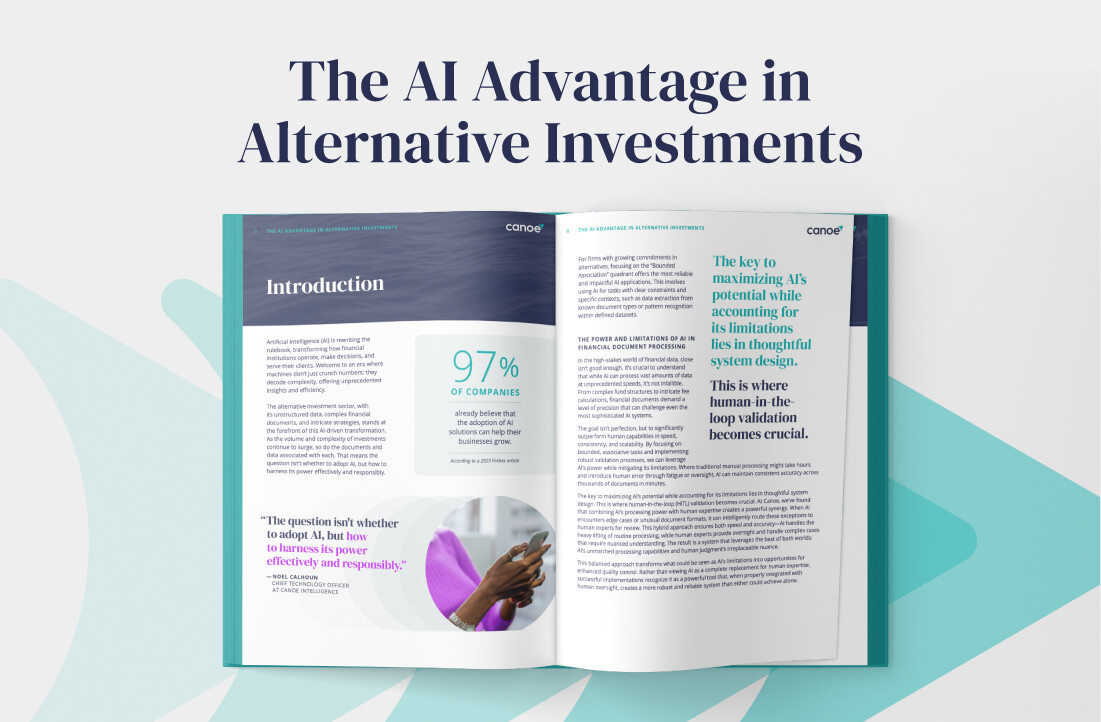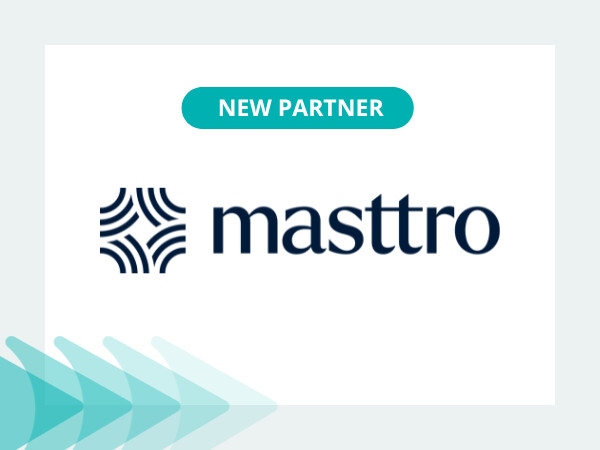The Canoe Optimized Workflow Step 2: Document Categorization
This article is part two of a five-part series covering each aspect of the Canoe Optimized Workflow. The Canoe Optimized Workflow is a roadmap for any organization investing in or allocating to alternative investments to unlock new efficiencies and reimagine their operational processes by leveraging a combination of breakthrough technology and industry expertise.
Maintaining Order in an Unstructured World
After you gather all of your client reporting documents, the next step is to make sense of these disparate files, organize and save them down, and take action where needed. We call this step Document Categorization. This process includes identifying the client account, entity name, investment name, document type, report date, and other pertinent data from each document. With this information, the documents are saved and stored, each with (ideally) the same preferred naming convention and location for easy access in the future. Some firms skip the step of applying a consistent, internal naming convention, or storing the documents in a centralized location, as this requires a significant amount of manual work and diligent adherence to process.
Clearly, many challenges can arise when different team members are searching for a specific file to complete time-sensitive client reporting tasks. It’s easy for various team members to name documents differently or hastily, or to save a document in the wrong folder by accident. We address each of these challenges in Step 2 of the Canoe Optimized Workflow.
- Inconsistent Naming Conventions. When different team members are working on this task of storing and saving the documents received from investment managers, it’s common to save the documents within one’s personal drives or desktops without a standard file name. Everyone has a different style and structure that makes sense to their unique workflow. While this approach could be sufficient if one is working independently, it is not effective when collaborating with other team members who also need access to this information. Moreover, even with a mandated file naming convention to be used, it is highly possible for team members to mistype an investment name, thus causing significant difficulties down the road in locating the relevant documents with ease.
- Internal Document Storage. Similar to naming documents inconsistently, documents can also be stored in incorrect folders. When working with thousands of documents on a quarterly basis for a variety of clients, it’s easy to bulk-save documents to the wrong folder. This type of mistake can cost the team many hours or wasted time looking for missing documents and data points to feed client reports.
The majority of our team has, at one point in their career, spent time working with alternative investment documents and manually entering or cross-referencing client reporting data. Every challenge that the team experienced during this process is accounted for and translated into our technology.
In fact, our CEO, Seth Brotman worked as an OCIO for a number of family offices and held a senior role at an allocator-focused FinTech analytics company. In both cases, data collection was primarily managed manually. To him, it became obvious that this approach was not sustainable or scalable and needed to be addressed in a more systematic way.
At Canoe, these experiences and insights contribute to the approach we’ve taken in building a technology platform to solve this specific problem for clients of all types. In leveraging Canoe, our clients are able to free up time and energy to focus on higher-order tasks.
From a Document Categorization perspective, Canoe applies a few techniques to streamline the classification and storage of documents and automate away the manual frustrations associated with this process:
- Centralized Document Storage. Canoe immediately and systematically tags documents by date, client account, legal entity, fund, and document type and applies a standard naming convention that you can customize to align with your preferences. All documents are stored in our cloud-based repository, securely accessible with an internet connection. Users are able to search, sort, and filter on any standard and custom tags and access the documents they need in sub-seconds- no more missing or incorrectly named documents.
- Streamlined Document Delivery and Access. From within the Canoe Intelligence Document Center, all permissioned team members can access documents directly (either individually or in bulk) solving for any control issues that arise when completing this work manually. Additionally, organizations can opt to feed their organized and renamed documents by API into relevant internal folders. Either way, your data and documents are always securely accessible in the cloud and via API.




